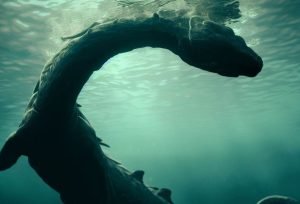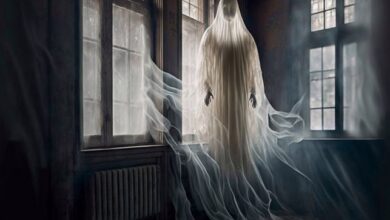Ghosts? Time Travel? A Hidden, Ancient Race?

When it comes to trying to ascertain the true nature of the British Bigfoot and wild man encounters – which is a deeply fraught and difficult task at the very best of times – the theories are as wide and varied as they are controversial and thought-provoking. But, without doubt, one of the most engaging of all scenarios to explain this undeniably nationwide, ancient conundrum comes from Neil Arnold, whose views on the matter I secured in a January 2012 interview. Having extensively investigated such reports, Neil says: “I’ve always wondered what type of manifestation these U.K. “wild men” could be. In the autumn of 2011 a psychic lady who I know as a friend and who I trust – I don’t often have any interests in psychics – accompanied me to Blue Bell Hill, which is a very haunted village in Kent, a few miles short of the town of Maidstone. I knew of several obscure “man-beast” reports in the area which she knew nothing about. I took her to one particular spot, near some ancient stones, hoping she’d pick up a ghostly presence and she said she felt nothing whatsoever, but she did state quite categorically that a few years previous, around 2003 she’d had a bizarre encounter in the area one night.”
The story told to Neil goes like this: “She had visited Kits Coty House – a set of stones – with a group of fellow psychics. Her friends were over on one side of the field which harbours the stones and she was in another area when she noticed someone walking towards her a few hundred yards away. The figure seemed to be striding rather aggressively and was coming from the direction of a thicket which runs alongside the field. This was no normal human of modern-day standards, however, as Neil’s following words make acutely and abundantly clear: “The woman, whose name is Corriene, stated that from a distance the figure appeared huge in build and covered in hair and she sensed it was not “real” but gave off an air of malevolence. The figure marched towards her and she could see it had long hair and a beard, covering most of its face. The hulking figure was taller than six feet and appeared to have a loin cloth around its waist and furred boots. No-one else saw this figure, but I was intrigued as I knew that in the past several witnesses had come forward to say they’d seen similar figures in woods within miles of Blue Bell Hill.”
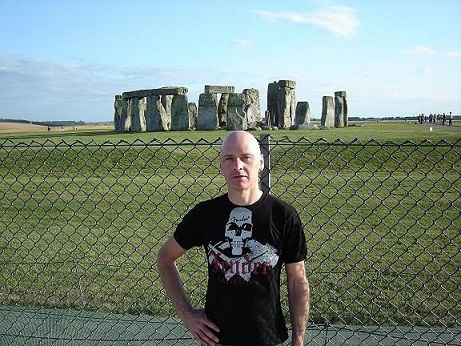
It was this encounter that set Neil on a decidedly intriguing train of thought: “I began to wonder if people had seen, from a distance, some type of ghostly primitive man – long hair, bearded, muscular, animal fur around the waist – who, from several hundred yards away, or in ill light, may have looked as if he was covered in hair. Blue Bell Hill and much of Kent is steeped in history – so maybe people were seeing some type of Neolithic hunter. Corriene was intrigued by what I said and then, rather startled, mentioned that on another occasion whilst in the area of the stones she’d seen several of these people who she felt were not aggressive, and although armed with spears were simply guarding the area and stooping low in the bushes, curious as to what they were seeing.” Significantly, this case did not stand alone, as Neil told me:
‘In 1974 a woman named Maureen – who I became very close friends with after working with her ten years ago – was with her boyfriend in woods off a close named Sherwood Avenue, in Walderslade, which, as the crow flies, is only a couple of miles short of Blue Bell Hill. Her boyfriend was tending to the fire when Maureen felt as if she was being watched. She turned slowly and to her amazement saw a massive figure, standing over seven feet tall, seemingly covered in hair, just a few yards away. The figure had bright eyes which blinked. The figure seemed to crouch down behind the bushes very slowly, and Maureen asked her boyfriend if they could leave the area, and they did. Maureen never told her boyfriend what she’d seen. They eventually married and were together for many years. In fact, she never told anyone about what she’d seen until she realised what I was interested in.” Neil concludes: “I believe Maureen one hundred per cent, but I strongly believe this figure was some type of elemental orspirit. I also believe this figure could have been a Neolithic type of hunter.’
Possibly of relevance to the theory and observations of Neil Arnold – and Maureen, too – is the story of a noted Devon folklorist and acclaimed writer, Theo Brown. The author of such titles as Devon Ghosts and Family Holidays Around Dartmoor, and someone who – as we have seen – had her very own experience with Devon’s notorious Hairy Hands, Brown collected a number of deeply similar stories to those cited by Neil, including one chilling recollection by a friend of hers who had been walking alone at dusk near the Neolithic earthworks at the top of Lustleigh Cleave, which sits on the extreme east side of Dartmoor, in the Wrey Valley. Lustleigh Cleave is an extraordinarily strange place at the best of times, and it appears to be one of those ‘window areas’ that Ronan Coghlan described earlier, and where an inordinate number of unexplained incidents and anomalous phenomena seem to take place on an amazingly regular basis. Moreover, the remains of prehistoric stone huts can be seen in the direct vicinity, and an ancient burial monument, Datuidoc’s Stone – which is estimated to have originated at some point around 550 to 600 A.D. – still stands to this very day, pretty much as it did all those thousands of years ago.
Jon Downes says of the weirdness that dominates Lustleigh Cleave: “I have got reports of sightings of a ghostly Tudor hunting party, of mysterious lights in the sky, and even the apparitions of a pair of Roman Centurions at Lustleigh Cleave.” But, adds Jon, getting to the most important aspect of the story: “‘Theo Brown`s friend saw, clearly, a family of ‘cave men,” either naked and covered in hair or wrapped in the shaggy pelts of some wild animal, shambling around the stone circle at the top of the cleave.” Now to a neanderthal in Coventry, England. The late Stan Gooch, the author of a number of books, including Creatures from Inner Space and The Paranormal, told of his encounter with nothing less than what seemed to be a Neanderthal man at a séance held at a house in the English city of Coventry in the 1950s! In Gooch’s very own words, during the course of the séance, something both primitive and primeval materialised before the shocked attendees:
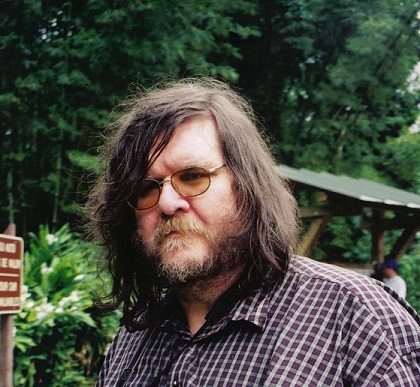
“This was a crouching ape-like shape, which became clearer as the moments passed. I guess it approximated to most people’s idea of what an ancient cave man would look like. Yet one could not make out too much detail – the eyes were hidden, for example. It stood in half shadow, watching us, breathing heavily as if nervous. I must say, though, that I sensed rather than heard the breathing. I could not decide whether our visitor was wearing the skin of some animal, or whether it had a rough coat of hair of its own.” All attempts to question the man-beast, and have it join the circle, were utterly fruitless, and, eventually, it melted away into nothingness. Nevertheless, Gooch never.” Rather interestingly, Gooch, in later years penned a number of books, including The Neanderthal Question and The Neanderthal Legacy, which theorized that we, as Homo sapiens, are the result of a hybrid mix of Cro-Magnon man and Neanderthal man. And – once again – we should not forget that the ‘crouching’ appearance of the primitive man encountered by Gooch echoed certain cases that Jon Downes investigated at Hangley Cleave, Somerset.
Now for the the horrors of Hoy. W.E. Thorner was on the island of Hoy, off the north coast of Scotland, during the Second World War when he saw a group of wild men dancing on the top of a cliff at Thorness – a place named after the Norse God of the dwarfs – at the height of a tumultuous winter thunderstorm. In Thorner’s own, captivating words: “These creatures were small in stature, but they did not have long noses nor did they appear kindly in demeanour. They possessed round faces, sallow in complexion, with long, dark, bedraggled hair. As they danced about, seeming to throw themselves over the cliff edge, I felt that I was a witness to some ritual dance of a tribe of primitive men. It is difficult to describe in a few words my feelings at this juncture or my bewilderment. The whole sequence could have lasted about three minutes until I was able to leave the cliff edge.”
In October 1995, the Cannock Mercury newspaper reported on a series of very weird events that were then occurring in the midst of Beaudesert Old Park, which is situated very near to Castle Ring. Home to a camp for both scouts and guides, Beaudesert was the site of repeated, strange activity in the late summer and early autumn of 1995. Not only that, but a group of scouts was going to stake-out the area in a careful and dedicated bid to hopefully try and get to the bottom of the mystery, once and for all. The Mercury noted: “Wardens and assistants have reported strange noises, screams and eerie goings-on around the camp.” Indeed, they had, including encounters with a dark-cloaked figure and a ghostly child roaming the woods and haunting the roads. Steve Fricker, the assistant-leader of the 2nd Rugeley Hillsprings Scouts related at the time: “It is said that the ancient horsemen of old are now seeking revenge for the disturbances they have had to face for several years from these excitable youths.” The newspaper added: “Scouts will be camping out to ‘confront’ the spirits and attempt to restore peace. They will be staying awake from Saturday evening (October 28) until dawn on Sunday, entertained by wardens’ tales of the hauntings.”
Ultimately, however, the ‘horsemen of old’ did not make a showing. But, maybe we have a precedent for such a prehistoric horse-rider, and one that may help explain at least some strange sightings of wild men in the British Isles. Now we come to the Rollright Stones, which are situated near Long Compton, a centuries-old little village in the county of Oxfordshire. Collectively, they are comprised of a tomb, known as the Whispering Knights, a classic circle of stones called the King’s Men, and a solitary stone referred to as the King’s Stone. As for the time of the construction of the Rollright Stones, this appears to be a clear-cut issue: in the Neolithic and Bronze Age eras.
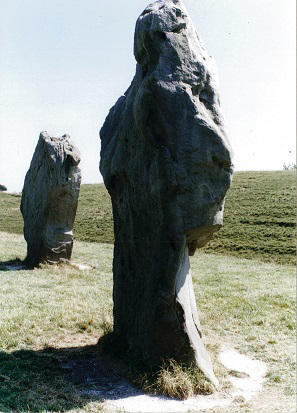
As with Stonehenge, legends and pet-theories abound as to the particular origin of the Rollright Stones. Certainly, the most engaging is that which surfaced in 1610 from a historian named William Camden. The story goes that the stones were not always stones. They originally represented an unnamed visiting king and his faithful knights who were turned to stone – in classic Gorgon-style, one might well suggest – by a legendary local witch, one Mother Shipton. The king, not surprisingly, became the King’s Stone. The bulk of his men were turned into the King’s Men. While a few who had initially avoided – but not for long, unfortunately – Mother Shipton’s malevolent powers quickly and collectively became the Whispering Knights. In 1977, author Paul Devereux established what became titled the Dragon Project; the purpose of which was to study claims that certain British prehistoric sites had unusual forces or energies attached to them, including magnetic, infrared and ultrasonic anomalies. While investigating none other than the Rollright Stones, Devereux reported that one of the team members – described as being a well-known archaeologist – was sitting in a van when an unidentified, hair-covered beast of considerable size walked by. An instant later, it utterly vanished, never to put in a re-appearance. My final thought: maybe what was seen at the Dragon Project wasn’t a hairy monster, but an ancient warrior covered in fur.


